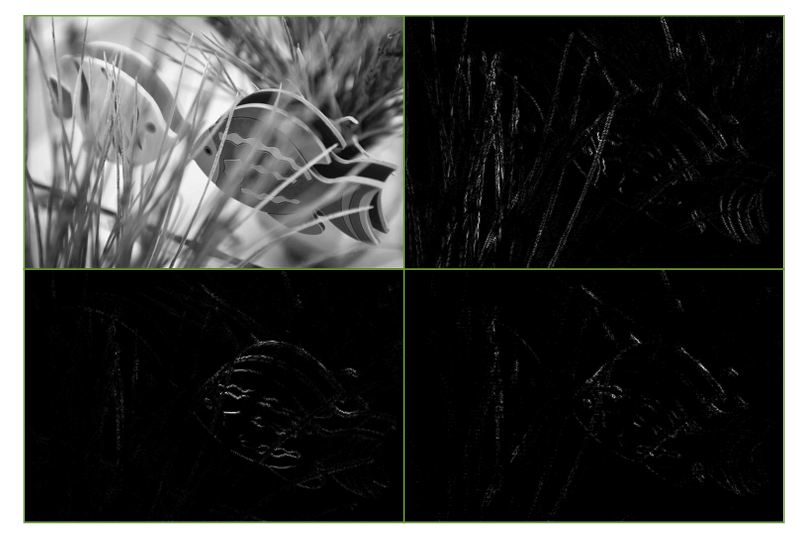 |
|
The key component to the JPEG2000 image compression standard is the discrete wavelet transformation. The idea of compression is simple - we represent the intensity values of each color using less information than needed for the original image. This process is called coding. If we naively perform coding on the original image, we do not generally see much reduction in storage space. The trick is to transform the image to a new setting where the coding process is much more efficient. The image above is one of the three discrete wavelet transformations that will be passed to the coder. The upper left hand corner represents an approximation to a grayscale version of the original image, while the upper right, lower left, and lower right portions represent changes in the vertical, horizontal, and diagonal directions between the approximation and a grayscale version of the original image. Note that if there is not much change in a particular direction, then the corresponding element(s) will be near or approximately 0. These values are represented by black. Conversely, large changes are represented by lighter intensities. |